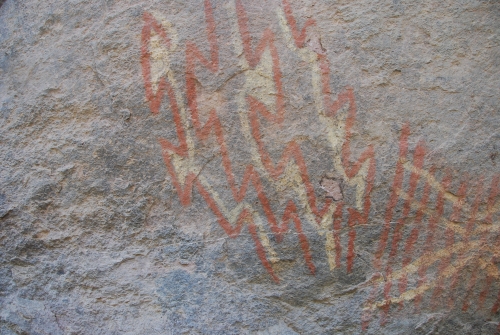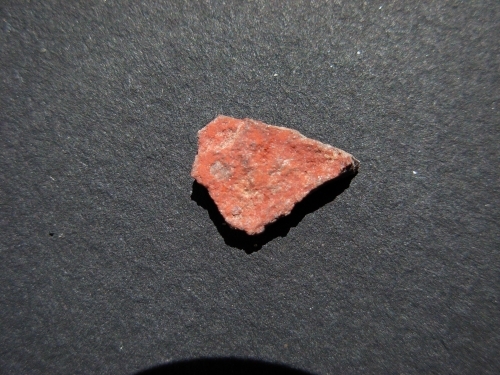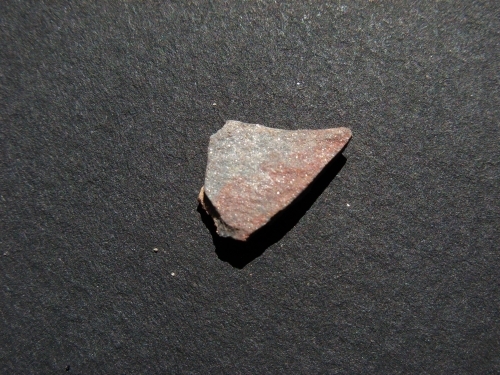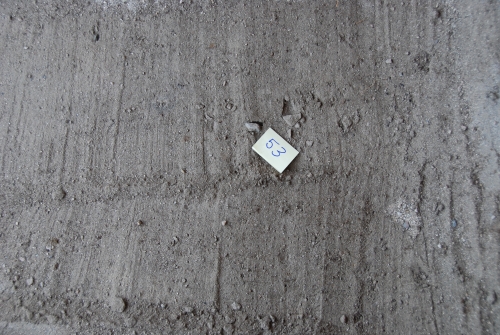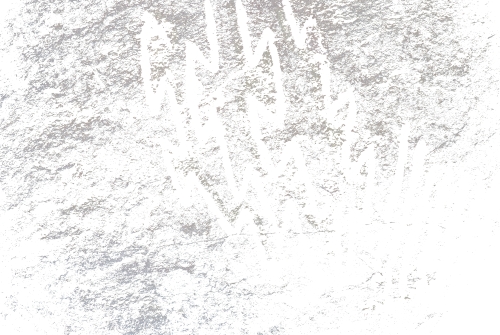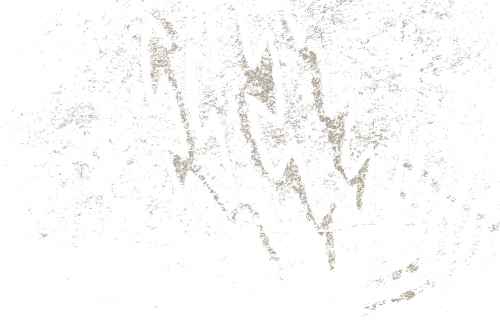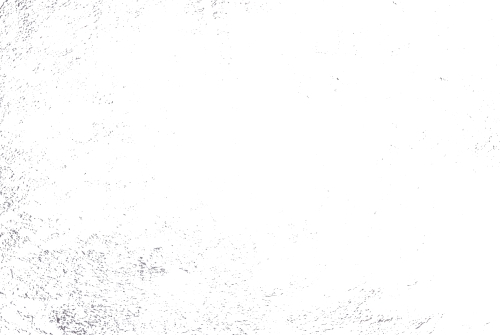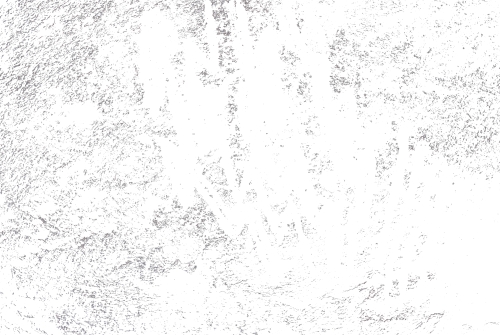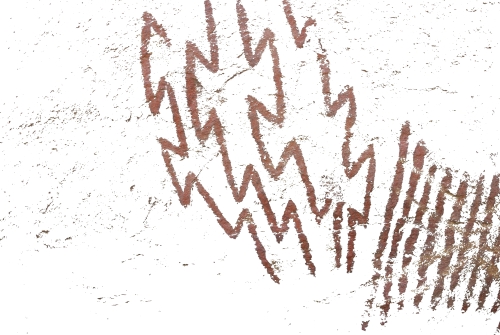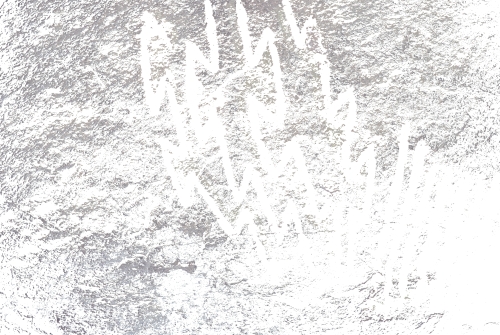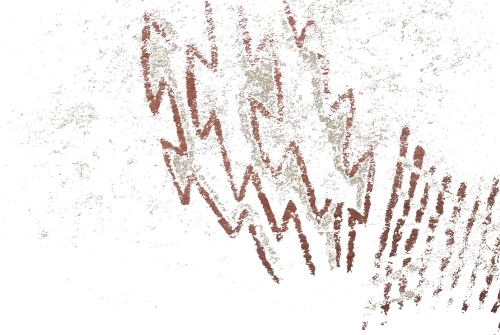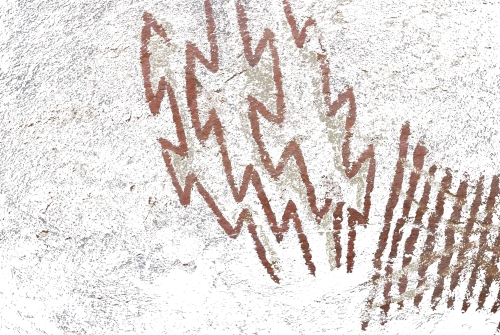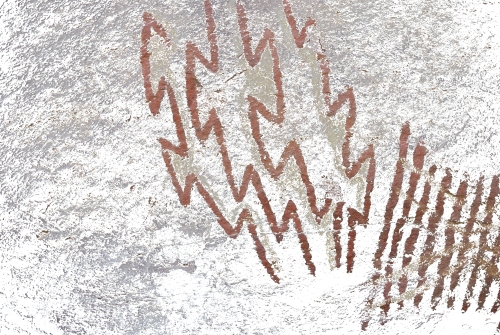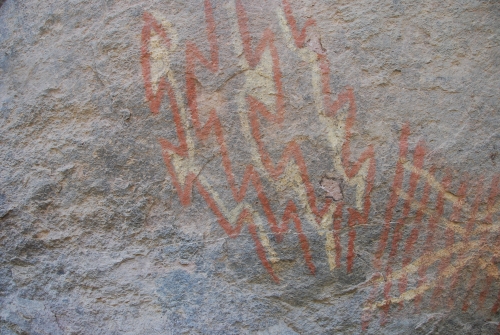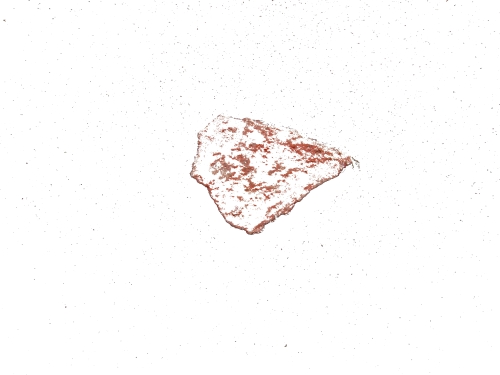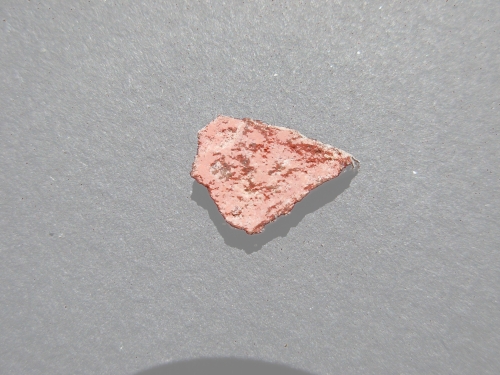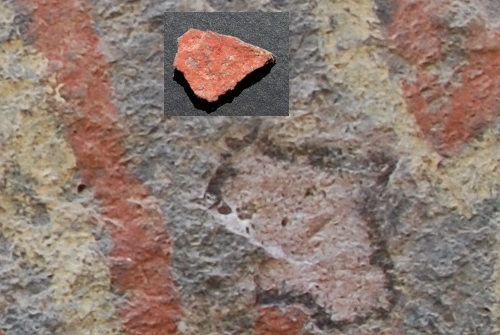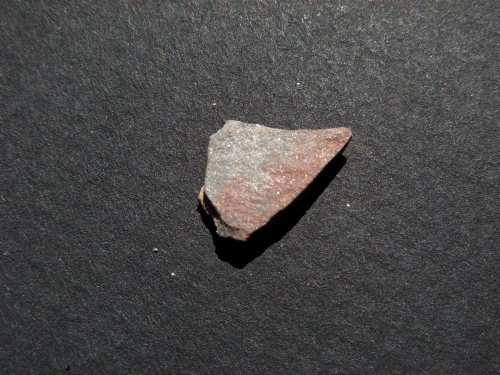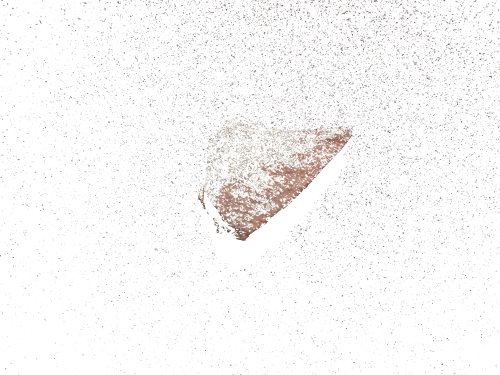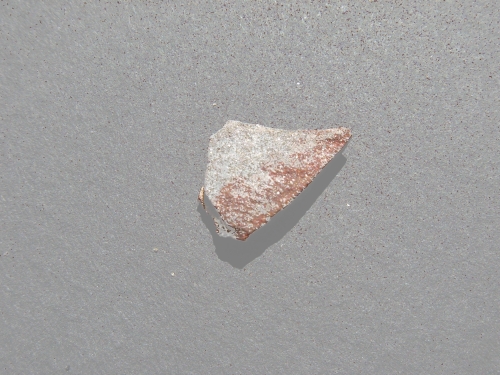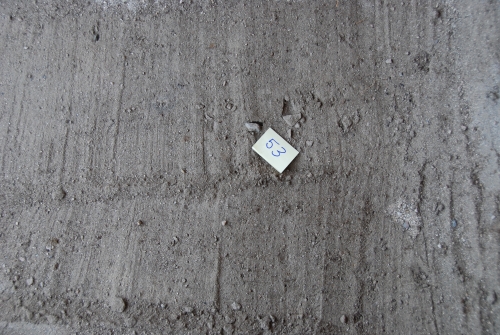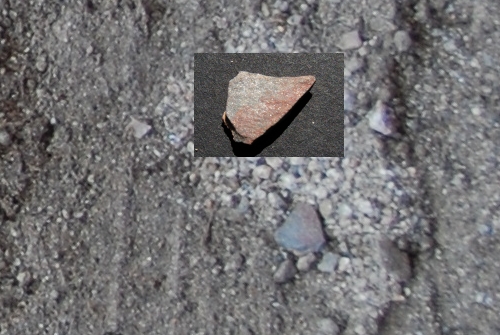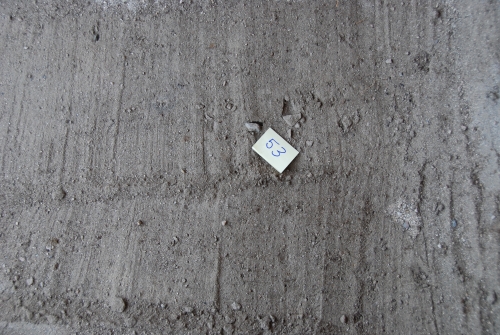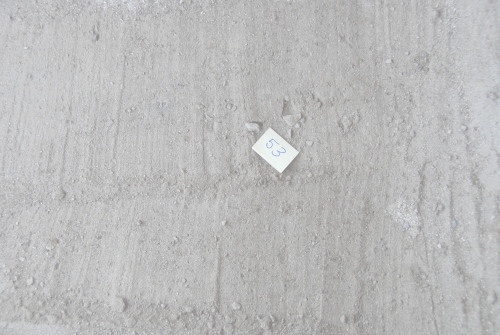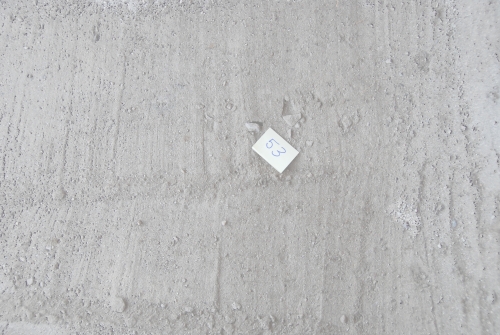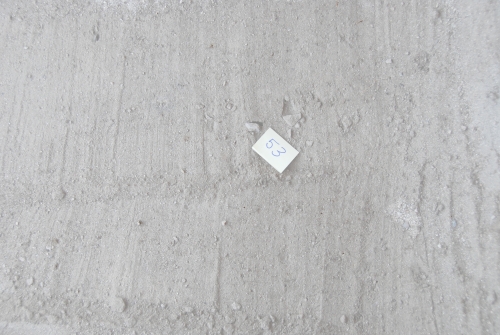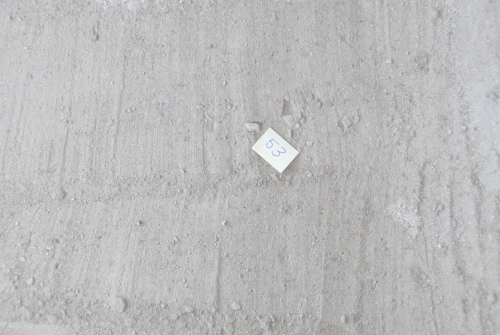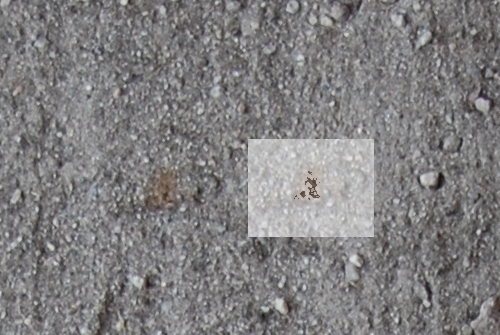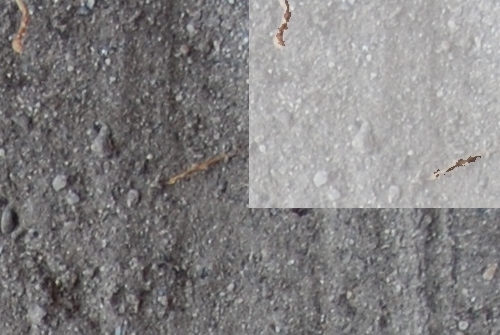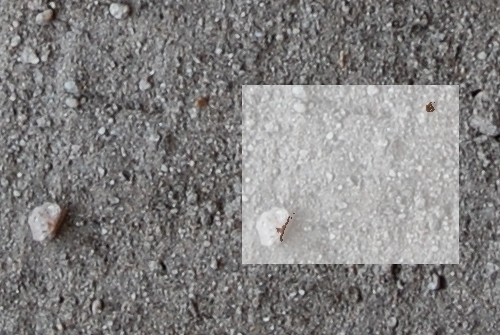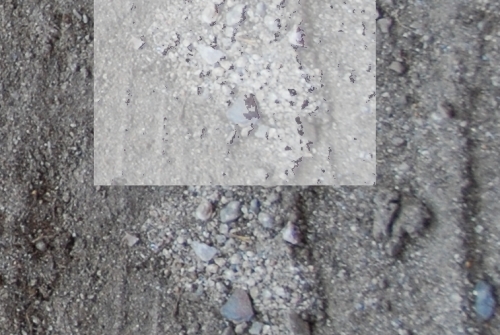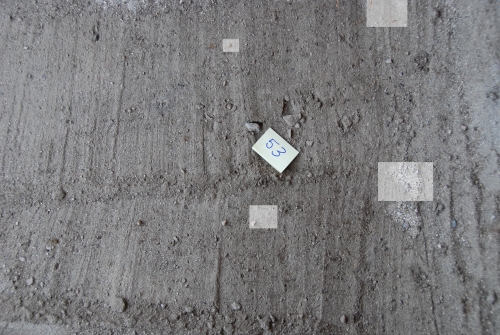In testing for fallen pigment using our new dating method, we often encounter fallen chips from the motif itself. This was very evident in the Lightning Bolt motif at the Montevideo pictogaph site in Baja California Norte. Before soil testing, the motif was photographed to determine values of the red (ochre) and cream (clay) colours. Then, a small slot of underlying soil was scraped away in 5mm sublevels to a depth exceeding one-half meter. Each sublevel photograph was enlarged to identify fallen red pigment particles. A fallen chip was found pigmented face down in a lower sublevel and gave a minimum date for the motif. Lower sublevels with pigment suggest multiple paint applications or palimpsests over the centuries, while the bottommost sublevel with red pigment had AMS-datable charcoal which gave an age for the motif of 1000 years.
Our goal in showing you this series of photographs is:
- to compare the colour of the fallen pigment particles and pigmented chip with the original motif. As fallen pigment particles are microscopic, only the chip is displayed here;
- to find the place on the motif where the chip fell;
- to estimate multiple paint applications or erosional cycles within the various sublevels;
- to remove or reapply motif and background colours for a clearer motif rendition using our customized software;
- to compare both faces of the fallen chip to show that paint easily penetrated its pores. This penetration within the rock of several mm conserves pictographs long after they vanish to the naked eye. Unfortunately, the same is true for modern spray paints used in vandalized art.
- to anatomically dissect the motif to show its order of paint application; e.g. several closeups show the cream-coloured clay was applied after the red ochre. We can sometimes tell if a priming coat or sealant was applied before the motif.
(Editor’s Note – Bryan Gordon 2010-02-22)
Contributor : Bryan Gordon
